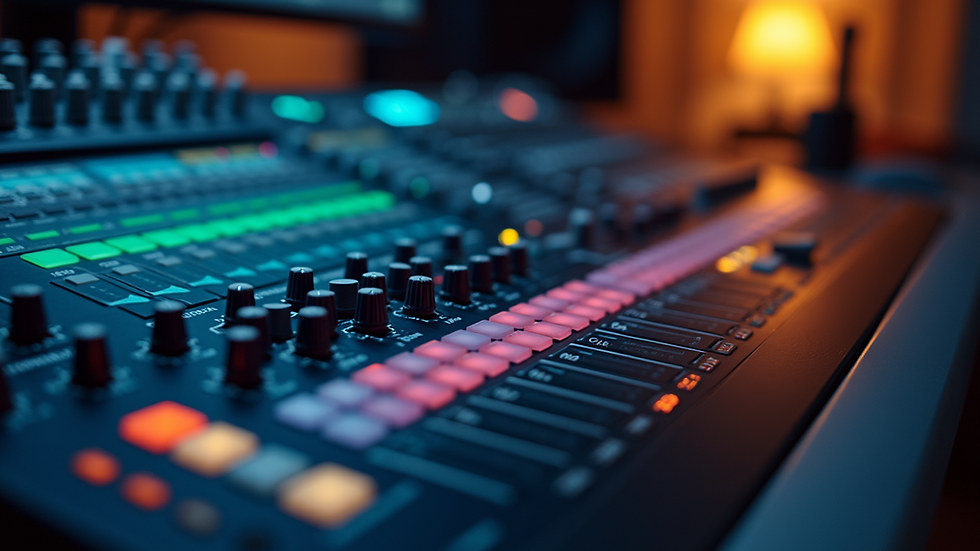DIY Mastering In Protools : Step by Step Tutorial
- nicolas Essig
- Mar 29
- 3 min read
Mastering a track is a critical part of music production. It not only improves the overall sound quality but also ensures that your music sounds great on different playback systems. This tutorial takes you through the detailed, step-by-step process of mastering a song in Pro Tools, a popular and powerful digital audio workstation (DAW) used by both professionals and music lovers.
Understanding Mastering
Mastering is the final touch for your mix. It prepares the audio for distribution and gives your song a polished and cohesive sound. While mixing focuses on individual tracks, mastering emphasizes the overall stereo mix. This crucial step ensures consistent tonal balance and appropriate loudness across the track. For example, tracks that have been professionally mastered can often reach loudness levels of -14 LUFS, while maintaining dynamic range, which is vital for making music sound good in various environments.
Setting Up Your Session
Begin by creating a new session in Pro Tools. Set your session to a sample rate of 44.1 kHz or 48 kHz, and a bit depth of 24-bit for optimal sound quality. Import your stereo mix into the session. It is important that your mix is not clipping and hovers around -6 dB to -3 dB for headroom. This gives you enough space for further processing during mastering.
Add Mastering Plugins
Next, you’ll want to incorporate essential mastering plugins on your master fader. A typical mastering chain might consist of an equalizer (EQ), a compressor, and a limiter. Depending on your track's needs, you may also add stereo wideners and enhancers.
EQ: Make subtle adjustments to the frequency spectrum. For instance, you might remove any frequencies below 30 Hz to clear up low-end muddiness, while boosting around 3 kHz to add clarity to vocals and instruments.
Compressor: Apply compression to smooth out dynamic variations. A light ratio of around 1.5:1 to 2:1 with a threshold set to just touch the peaks helps maintain punch while ensuring the overall track remains consistent.
Optimize Loudness
Once your EQ and compression are established, the next focus is loudness. Use a limiter as the last plugin in the chain to boost the perceived loudness of your track. Set the ceiling to -0.1 dB to avoid any digital clipping during export. A well-mastered track should ideally sit comfortably around -14 to -10 LUFS.
Referencing and Comparing
Comparing your track to reference tracks is crucial throughout the mastering process. Import a selection of reference tracks from the same genre that are well mastered. For example, you could reference a popular song that achieved a high chart position to understand how your track compares. Pay attention to the dynamics, loudness, and tonal balance of your track versus the references you choose. This practice will help you ensure your track meets industry standards.
Final Checks and Exporting
Before you hit that export button, listen to your track on various playback systems, such as headphones, studio monitors, and car speakers. This will help you identify how your track translates in different environments. Take notes on what adjustments are needed, whether that means adjusting the bass levels or fine-tuning the EQ.
When you are satisfied with the final product, it’s time to export your track. Navigate to `File` > `Bounce to` > `Disk` and select your desired file format, such as WAV or MP3. Ensure you choose a sample rate that matches your session settings, typically 44.1 kHz 24bit for streaming platforms.
Mastering Made Easy
Mastering a song in Pro Tools may seem challenging at first, but it can also be a rewarding experience. By properly setting up your session, applying the necessary plugins, optimizing loudness, and referencing tracks, you can create a master that sounds professional and polished. With practice and a keen ear, you'll build confidence in your mastering skills and elevate your music to shine on any platform. Happy mastering!


thanks for the support!